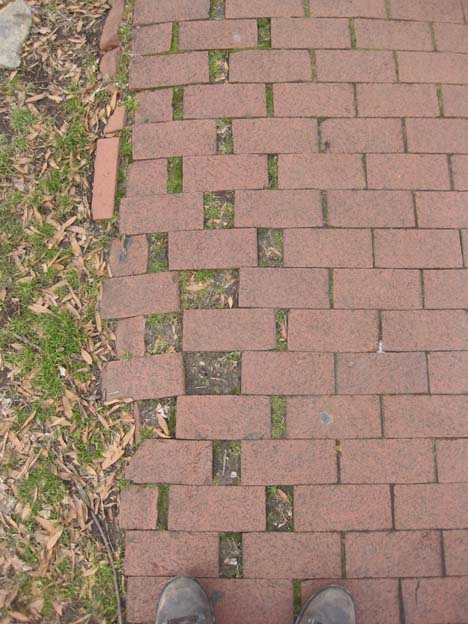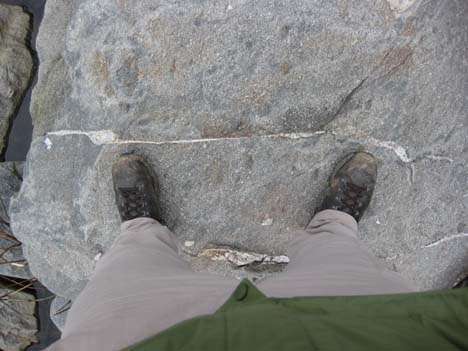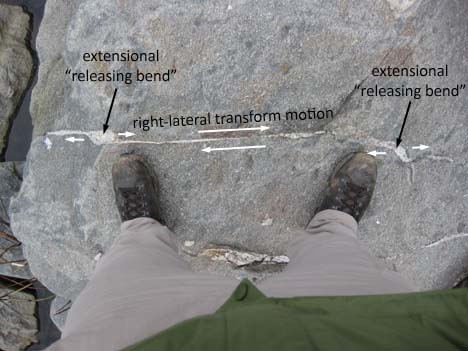21 February 2010
Transtensional quartz vein
Posted by Callan Bentley
On last May’s GSW spring field trip to Chain Bridge Flats, I saw a quartz vein:
Surely, upon looking at this photograph, you will be struck by the way the vein is not the same thickness along its length, and parts of it appear to be a white line transitioning into a parallelogram, and back into a white line again. What, you make ask, gives?
I think what you’re looking at here is a transtensional quartz vein. Like all veins, this one formed when the host rock (in this case, metagraywacke of the “Sykesville Formation”) cracked open and hot fluids squirted into that fracture. Elements dissolved in the fluid organized themselves into mineral crystals, and precipitated in the void space of the crack, sealing it shut with quartz “glue.”
“Transtension” is the word used to describe a kinematic regime which contains elements of transform “shear” (in this case, right-lateral) and tensional stress. Because of the jagged shape of the fracture here, some parts of the fracture are grinding past their neighbors, while other parts are dilating. The dilating parts are only dilating because of the shape of the fracture. The actual motion of the blocks of rock is uniform and non-rotational. We call these little pulling-apart areas “releasing bends.”
On a much larger scale (lithosphere-scale), releasing bends near the surface create pull-apart basins like the Dead Sea. Deeper in the crust, pull-aparts may serve to accommodate pluton emplacement, as has been suggested by Tikoff & Teyssier (1992) for the Tuolumne Intrusive Suite of the high Sierra in California.
This “part-sliding, part-extension” pattern is actually quite common. Here’s another example, this one in a brick sidewalk on Capitol Hill:

The same pattern also shows up at the Mid-Atlantic Ridge, where the extensional segments (north-south-oriented) are sites of new oceanic crust being formed, and the fracture networks (east-west-oriented) are sides of transform faults, where the South American Plate slides laterally past the African Plate:

Where else have you seen this pattern? Use the comments section to share an example or two.




 Callan Bentley is Associate Professor of Geology at Piedmont Virginia Community College in Charlottesville, Virginia. He is a Fellow of the Geological Society of America. For his work on this blog, the National Association of Geoscience Teachers recognized him with the James Shea Award. He has also won the Outstanding Faculty Award from the State Council on Higher Education in Virginia, and the Biggs Award for Excellence in Geoscience Teaching from the Geoscience Education Division of the Geological Society of America. In previous years, Callan served as a contributing editor at EARTH magazine, President of the Geological Society of Washington and President the Geo2YC division of NAGT.
Callan Bentley is Associate Professor of Geology at Piedmont Virginia Community College in Charlottesville, Virginia. He is a Fellow of the Geological Society of America. For his work on this blog, the National Association of Geoscience Teachers recognized him with the James Shea Award. He has also won the Outstanding Faculty Award from the State Council on Higher Education in Virginia, and the Biggs Award for Excellence in Geoscience Teaching from the Geoscience Education Division of the Geological Society of America. In previous years, Callan served as a contributing editor at EARTH magazine, President of the Geological Society of Washington and President the Geo2YC division of NAGT.